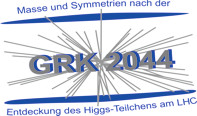The transparency of Teflon to Xenon Light
Polytetrafluoroethylene (PTFE, Teflon) is commonly used to encapsulate the active liquid xenon (LXe) volume of xenon-based particle detectors since it shows a very high reflectance for LXe scintillation light with its peak emission at 178 nm. This helps to increase the recorded light signal and thus decreases the detector threshold and decouples the active from the inactive LXe detector volume. On the other hand, PTFE is an important source of background events. In particular it emits neutrons which could mimic dark matter WIMP signals. However, it is not easy to replace the electrically insulating PTFE by another material as these produce even more background and don't reflect the light so well.
One goal of the ERC-funded ULTIMATE project is to investigate how the background from PTFE can be reduced- Reducing the total amount of PTFE in a low-background detector is a very straight-forward way in this direction, however, the question is when the thickness of the PTFE wall is too thin such that signals from the LXe surrounding the actual detector can penetrate through the wall and lead to detector artefacts.
This question was addressed by a measurement performed at the University of Münster. A well-defined light beam of 178 nm wavelength was directed at PTFE samples of variable thickness and the transmitted light was measured behind the sample by scanning all angular directions with a photosensor. The data could be well described by a simple model which was then extrapolated to also take into account the signal in the regions that could not be covered by the photosensor. The result of the study is that the transmission coefficient for non-reflected light is 0.89 mm and that PTFE wall thicknesses of around 3 mm provide sufficient separation of active and inactive parts of the detector.
- Publication:
VUV Transmission of PTFE for Xenon-based Particle Detectors
L. Althueser, S. Lindemann, M. Murra, M. Schumann, C. Wittweg, C. Weinheimer
arXiv:2006.05827





